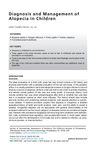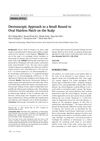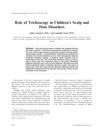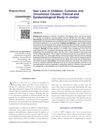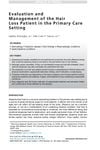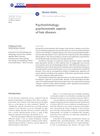Trichotillomania: Clinical Presentation, Diagnosis, and Etiology
January 2018
in “
Springer eBooks
”
trichotillomania hair loss alopecia perifollicular erythema trichophagia trichobezoar alopecia areata tinea capitis telogen effluvium traction alopecia DSM-5 criteria dermatoscopy catagen hairs telogen hairs anagen follicles perifollicular hemorrhage hair pulling hair ingestion hairball hair loss patches scalp disorders
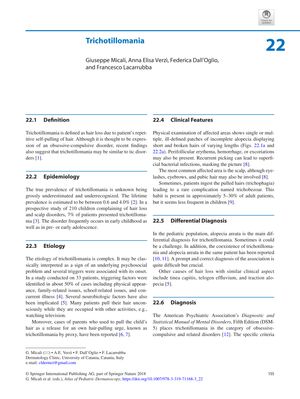
TLDR Trichotillomania is a condition where people repeatedly pull out their hair, which can be triggered by stress and has various physical signs.
Trichotillomania is characterized by hair loss resulting from the patient's repetitive self-pulling of hair, and while it has been traditionally associated with obsessive-compulsive disorder, it also shares similarities with tic disorders. The exact prevalence is unknown but estimated to be between 0.6% and 4.0%, with a study of 210 children showing a 7% prevalence among those with hair loss and scalp disorders. The etiology is complex, involving psychosocial issues and neurobiological factors, with about 50% of cases in a study of 33 patients having identifiable triggers such as appearance concerns, family or school issues, or concurrent illness. Clinically, trichotillomania presents as ill-defined patches of incomplete alopecia with broken hairs of varying lengths, sometimes accompanied by perifollicular erythema, hemorrhage, or excoriations. The scalp is the most common area affected, but eyelashes, eyebrows, and pubic hair can also be involved. Trichophagia, the ingestion of pulled hairs, occurs in about 5-30% of adult patients and can lead to trichobezoar, a rare complication. Differential diagnosis includes alopecia areata, tinea capitis, telogen effluvium, and traction alopecia. Diagnosis follows the DSM-5 criteria, which include recurrent hair pulling resulting in hair loss, attempts to stop the behavior, significant distress, and exclusion of other medical or mental conditions. Dermatoscopy reveals broken hairs, hair powders, and specific signs like flame hairs, coiled hairs, and tulip hairs. Histopathological examination typically shows increased catagen and telogen hairs without inflammation, pigment casts, empty anagen follicles, and torn-away follicles, sometimes with perifollicular hemorrhage.


